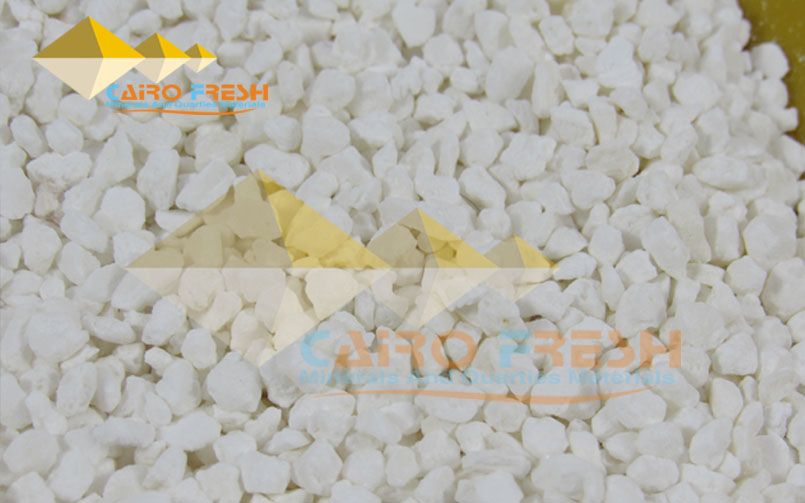Introduction
Seawater desalination is a crucial technology for providing fresh water in regions facing water scarcity. However, the desalination process often results in water that lacks essential minerals and has an imbalanced pH. Calcite, a naturally occurring form of calcium carbonate (CaCO3), plays a vital role in remineralizing desalinated water. This blog explores the science behind calcite dissolution in seawater remineralization and how it improves water quality.
The Chemistry of Calcite
Calcite is composed of calcium, carbon, and oxygen, with the chemical formula CaCO3. It is a naturally occurring mineral found in various geological environments, including sedimentary rocks like limestone and metamorphic rocks like marble. The dissolution of calcite in water involves the release of calcium and bicarbonate ions, which are crucial for improving water quality.
Dissolution Process
The dissolution of calcite in water is a chemical reaction that can be represented by the following equation:
CaCO3 (calcite)+H2O (water)+CO2 (carbon dioxide)→Ca2++2HCO3−\text{CaCO}_3 \ (\text{calcite}) + \text{H}_2\text{O} \ (\text{water}) + \text{CO}_2 \ (\text{carbon dioxide}) \rightarrow \text{Ca}^{2+} + 2\text{HCO}_3^{-}CaCO3 (calcite)+H2O (water)+CO2 (carbon dioxide)→Ca2++2HCO3−
This reaction involves several key steps:
- Contact with Water: Calcite comes into contact with desalinated water, initiating the dissolution process.
- Release of Ions: Calcite dissolves, releasing calcium ions (Ca2+) and bicarbonate ions (HCO3-) into the water.
- pH Adjustment: The bicarbonate ions act as a buffer, neutralizing the acidity of the desalinated water and increasing its pH to a more neutral or slightly alkaline level.
- Mineral Enrichment: The released calcium ions enrich the water with essential minerals, improving its quality and making it more suitable for consumption and various uses.
Factors Affecting Calcite Dissolution
Several factors influence the rate and efficiency of calcite dissolution in seawater remineralization:
- Surface Area: The surface area of calcite particles affects the dissolution rate. Smaller particles with higher surface area dissolve more quickly and efficiently.
- Water Temperature: Higher water temperatures can increase the dissolution rate of calcite, making the process more efficient.
- Carbon Dioxide Concentration: The presence of carbon dioxide (CO2) in water facilitates the dissolution of calcite, enhancing the release of calcium and bicarbonate ions.
- Water Flow: The flow rate of water through calcite reactors or filters influences the contact time and efficiency of the dissolution process.
Benefits of Calcite Dissolution
The dissolution of calcite in seawater remineralization offers several benefits:
- Neutralizing Acidity: Calcite dissolution helps neutralize the acidity of desalinated water by increasing its pH levels. This prevents the release of acidic water back into natural water bodies, protecting aquatic ecosystems.
- Adding Essential Minerals: The release of calcium ions during calcite dissolution enriches the water with essential minerals, supporting human health and various industrial processes.
- Improving Water Hardness: Appropriate levels of water hardness, achieved through calcite dissolution, improve the taste and quality of the water, making it more suitable for consumption and other uses.
- Cost-Effective: Calcite is widely available and inexpensive compared to other remineralization agents. Its natural abundance and efficient dissolution make it a cost-effective option for large-scale desalination plants.
Applications Beyond Drinking Water
The benefits of calcite dissolution extend to various applications beyond drinking water:
- Aquaculture: Calcite-remunerated water provides essential minerals for the health and growth of aquatic organisms, supporting sustainable fish farming practices.
- Agriculture: Irrigation with remineralized water ensures that crops receive necessary nutrients, promoting healthier and more nutritious produce.
- Industrial Processes: The dissolution of calcite enhances water quality, making it suitable for various industrial processes, including cooling, manufacturing, and chemical production.
Conclusion
The science behind calcite dissolution in seawater remineralization reveals its critical role in improving water quality and ensuring the safety and suitability of desalinated water for various uses. By understanding the chemistry and factors influencing calcite dissolution, we can optimize the remineralization process to provide high-quality water for communities and industries. As the demand for freshwater continues to rise, the importance of calcite in maintaining water quality and public health will become increasingly evident. By incorporating calcite into seawater treatment processes, we can ensure sustainable and reliable access to high-quality, mineral-enriched water for various applications, supporting the well-being of communities worldwide.

